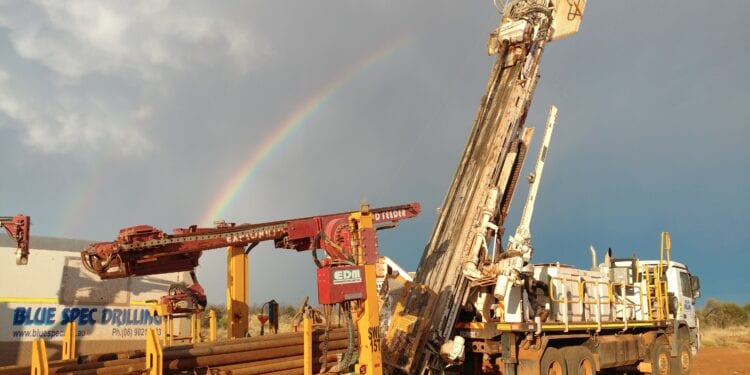Aiming To Follow Up Rumble Lead-Zinc Discovery
Great Boulder Resources (ASX: GBR) has secured a major land position in the highly sort after Earaheedy Basin, east of Wiluna in Western Australia.
Following the announcement by Rumble Resources Ltd of a major zinc-lead discovery at their Earaheedy Project in April 2021 GBR lodged three new tenement applications over a second zinc-lead target identified to the southeast of Rumble’s project.
The new tenements overlie the prospective Frere Formation within the Proterozoic Earaheedy Basin, with targets generated by GBR from analysis of publicly available geochemical data sets.
Great Boulder first identified prospective areas in the Earaheedy Basin in mid-2020 during a desktop study of the province’s regional potential, following initial promising drill results by Rumble. The potential of the region was further validated by Rumble’s recent results which underpin a shallow, large-scale exploration target of 40 to 100Mt at 3.5% to 4.5% Zn and Pb over 40km of strike.
The new GBR tenement position covers an area of 1,134 sq. km of prospective stratigraphy including more than 60km of strike highlighted by pathfinder geochemistry. This is a similar target scale to the early-stage exploration data that led to Rumble’s major discovery.
Managing Director, Andrew Paterson, said that whilst this project provides an exciting addition to the company’s exploration portfolio, its focus remains on the Whiteheads and Side Well Gold Projects..
“This is an exciting development for Great Boulder as it gives us a massive landholding with a compelling large-scale target over a major new zinc-lead province in Western Australia,” Mr Paterson said.
“Having previously completed the targeting study during 2020 we were following Rumble’s progress closely, and we were able to act quickly on Monday to secure these tenements as soon as the scale of Rumble’s discovery became apparent.
“This doesn’t impact any of our current exploration priorities in the medium term. In effect it’s a free option over an emerging, world-class base metals province that has the potential to add serious value to our project portfolio.”
The Wellington Mississippi Valley-type (MV) zinc-lead target was generated by comparing GSWA regolith geochemistry datasets from the Nabberu and Kingston 1:250,000 map sheets. The Rumble- Zenith project sits within the Nabberu sheet; Wellington within the Kingston sheet.
GBR used ioGas software to generate pathfinder element and reduced cell X-Y plots for the two project areas using antimony, bismuth, arsenic, tungsten, molybdenum, lead, silver, cadmium, nickel, copper and barium. Gridded images of these were then georeferenced against regional GSWA geological mapping and aeromagnetic and gravity images to prioritise exploration targets similar in style to the Rumble discovery.
Once granted, the company intends to commence low-impact regional exploration such as soil sampling, mapping and reconnaissance to confirm target areas.
Geophysical surveys such as gravity and airborne magnetics are also expected to play a key role in identifying structures likely to influence mineralisation within carbonate horizons within or at the base of the Frere Formation.












